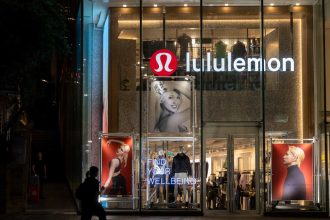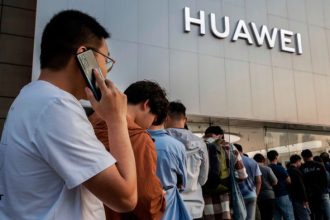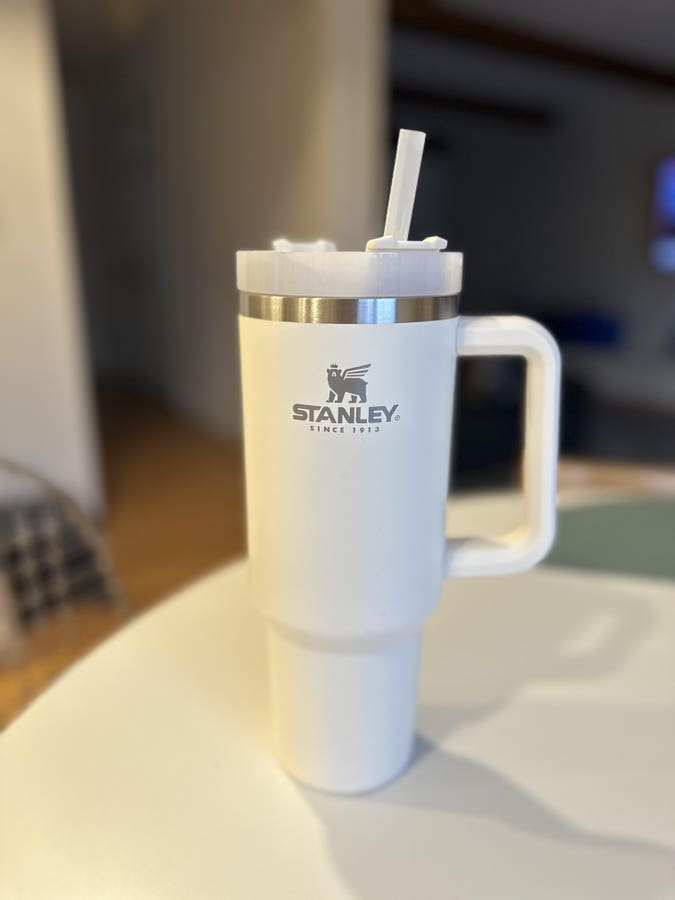There’s an adage that says, “It takes 10 years to be an overnight success.” In the case of Stanley, the drinkware manufacturer, that ten years is more like 110. Once a staple among outdoor enthusiasts and tradesmen, Stanley bottles have become the latest fascination for TikTok users—raking up billions of video views and millions of dollars.
Stanley was founded by William Stanley Jr. in 1913, who invented an all-steel vacuum flask technology that created an insulation that keep hot liquids hot and cold drinks cold. Its products range from 64-ounce jugs to one quart canteens, 16-ounce bottles to 30-ounce tumblers. However, it’s the Stanley 40-ounce tumbler, known as the Quencher, that has the public in such a frenzy.
There’s nothing particularly novel about the Quencher, which retails at $45 a bottle, to explain the craze that’s boosted Stanley’s annual sales from $75 million a year to $750 million a year in 2023. Nothing at face value explains why its bottles are flying off the shelves of retailers and flooding the feeds of social network technologies.
Which begs the question: how has a 110-year-old company captured the attention of influencers across the social web and secured such coveted cognitive real estate in the minds of the American public with what can only be described as a big water bottle?
What we’re witnessing with Stanley-mania is textbook social contagion—the spread and adoption of affects, behaviors, cognitions and desires due to peer influence. Not to be confused with virality, the spread of content or information from person-to-person, social contagion centers on the adoption that results from social pass-along. People aren’t simply watching and sharing consumer-generated Stanley videos; they’re buying bottles—in some cases, several bottles—and creating their own videos to upload to their social platform of choice.
These videos inspire others to follow suit, which influences others in a contagious fashion. If our people, or the people we look up to, are doing it, we’re more inclined to do it also. The more conspicuous the consumption, the more likely it is to influence others to consume. Consumption of Stanley bottles, in this regard, becomes an act of inclusion and a means of social currency.
The more people participate, the greater the contagion. As they say, nothing draws a crowd like a crowd. The result of this can lead to significant financial gain, as evidenced in the case of Stanley.
It should be noted that this phenomenon is not predicated on the performance of the product. Instead, it is myopically driven by our desire for social cohesion. That said, it certainly doesn’t hurt that the value propositions of the Quencher are quite compelling. This was evidenced in a recent TikTok video that set the internet ablaze last month.
The video featured footage of a woman’s car destroyed by a terrible fire supposedly caused by a recalled defect in certain models of the Kia Sorento. Although her car was completely obliterated, her Stanley Quencher survived the fire—with ice still intact, no less. Not only did this create a proof point of the product’s insulation performance, but it also created the kind of content that was built share. It was unbelievable. As the virality scholar and Wharton School of Business professor Jonah Berger’s research suggests, emotional arousal increases people’s likelihood to share.
As the video made its rounds on the internet, it provided an opportunity for current Stanley consumers to project their identity—their being in the know—and created an invitation for the initiated to find out more. The circuitous nature of this dynamic only leads to more contagious behavior. Couple this phenomenon with the product’s functional benefits and people’s growing disposition for healthier lifestyles, and you start to see how social traction can happen.
Like most things that take off in the zeitgeist, these happenings are a product of many factors. You can liken it to the cause of a forest fire. These cataclysmic events typically happen because of perfect conditions—drought, debris, dry air, etc.—and human interventions—discarded cigarette butts, unattended campfires, etc. The smallest spark can inadvertently set the forest aflame when the conditions are perfect.
That’s what we see here with Stanley: a combination of elements and a little randomness, or what some may call “luck.” That’s no slight to the marketing team at Stanley. They have proven themselves to be savvy in their ability to create interventions today, partnering with influencers and investing their efforts in social platform activities that might benefit them if the conditions work in their favor.
We can’t control randomness, but we can respond to it as the brand did with the woman whose car caught fire. The CEO of Stanley took to the social web to acknowledge the video and offer to buy the woman a new car. His video was widely spread and applauded, adding another story to the Stanley mythology and creating another reason for people to share.
Stanley couldn’t predict that the woman’s car would catch on fire, much like McDonald’s couldn’t predict the Grimace Shake memes. However, like McDonald’s, the brand recognized what took place and responded in a way that fanned the flames of the contagious spread.
We can’t predict what happens in the messy, uncontrollable business world in which we operate, but we can respond to it. Doing so requires understanding the “social” in “social contagion” and “social media.” Doing so requires understanding people.
Stanley has done a great job creating a great product. But that has been the case for 110-plus years. My wife and I used our Stanley religiously during the pandemic to achieve our desired water intake. Its benefits weren’t new news to consumers who knew of the brand. We, the people, drove awareness and increased interest in its products.
Stanley understands this reality. It’s no surprise, considering its CEO was the former CMO of Crocs, whose marketing efforts also benefited from a similar social dynamic and resulted in great success for the brand. The more we understand these dynamics, the more likely we’ll be to create interventions that can catalyze them—if we’re lucky.
Read the full article here





